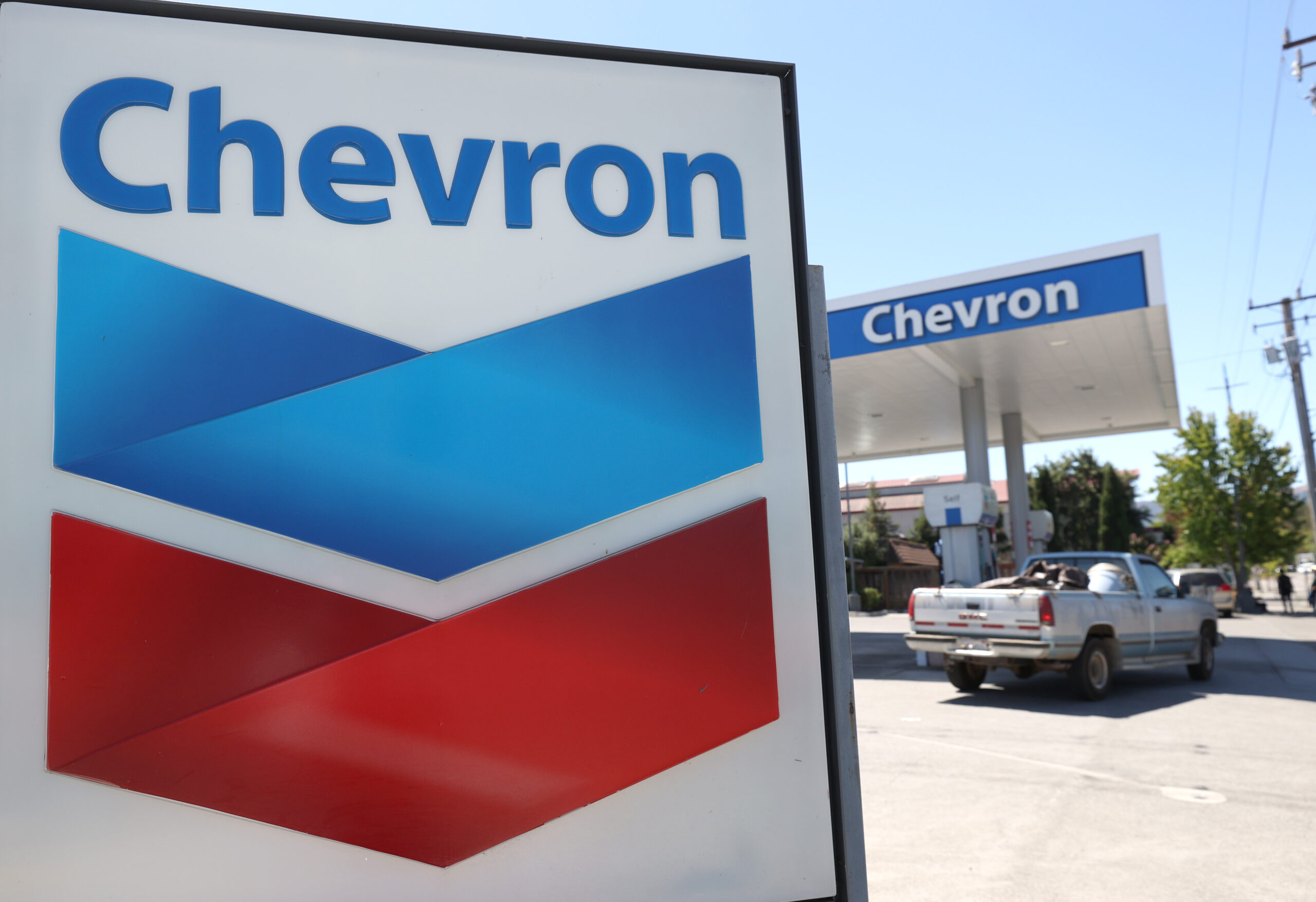Energy
Private: Exclusive Analysis: In U.S. TV Ads, Chevron Motors Past Its Big Oil Competition in Boasting of Sustainability Accolades

Key Takeaways
Chevron, BP, Exxon and Shell aired television ads in the U.S. market a total of 44,495 times between June 1, 2020, and August 31, 2021.
In nearly every month, Chevron dominated the television advertising landscape, running nearly two dozen ad campaigns a total of 29,591 times.
Chevron used sustainability-focused language in 80% of its total airings, and in 14 of its 22 total ads.
When it comes to television advertising over the past year, Chevron Corp. has dwarfed its Big Oil competitors, both in the number of ads it has run and in how many times it has aired them. And those ads have painted a far more sustainability-focused self-portrait than its competitors have done, touting claims of emission-reduction accolades over messaging about its core fossil fuel business.
According to an analysis from the advertising analytics firm AdImpact shared exclusively with Morning Consult, Chevron, BP PLC, Exxon Mobil Corp. and Royal Dutch Shell PLC aired television ads in the U.S. market a total of 44,495 times between June 1, 2020, and Aug. 31, 2021.
During that period, the companies’ outputs varied dramatically: Exxon went 10 months without airing any ads, while Chevron paid for nearly 4,500 airings in July alone.
In nearly every month tracked, Chevron dominated the television advertising landscape, running nearly two dozen ad campaigns a total of 29,591 times. August and September 2020 were the only exceptions, during which Exxon was a bigger television presence than its domestic competitor.
Both BP and Shell -- headquartered in London and The Hague, Netherlands, respectively -- have recently increased their television advertising after nearly a year of almost no airings, with both gathering speed in May of this year. In contrast, Exxon was a force on television sets in the summer of 2020, but has been silent for the past year, per the analysis.
The analysis only reviewed television ads, excluding online, print, radio or alternative advertising forms.
The content of the ads has varied, as well, with both Shell and Exxon focusing their few ads on the oil-and-gas backbone of the industry, and Chevron peppering its comparatively huge quantity with words evoking sustainability efforts.
While both Shell and BP have publicly announced plans to reach net zero emissions by 2050, their U.S.-based competitors, Chevron and Exxon, have been slower and more modest in setting such concrete goals (though Exxon is reportedly mulling taking the zero-by-2050 plunge).
The analysis specifically examined how many ads contained one or more of the following words: sustainable, renewable, environment, clean, carbon, emissions, future, green, solar or wind.
By this metric, Chevron once again left the others in the dust, featuring sustainability-focused language in 80 percent of its total airings, and in 14 of its 22 total ads. The ad that ran the most (5,336 total airings) dominated from August-October 2020, and features a young girl catching butterflies before highlighting the company’s over $1 billion invested in carbon capture projects; this represents a sliver of the company’s overall size (with assets valued at $239.8 billion, per its 2020 annual report).
Chevron did not respond to a request for comment on its advertising strategy.
Meanwhile, BP only included sustainability-focused language in 3 percent of its total airings, or two total ads, both of which focused on the concept of net-zero emissions more broadly, rather than on specific renewables or carbon removal endeavors.
BP would not comment directly on its advertising trends, but according to the company’s website, it has stopped campaigns focused on its corporate reputation while continuing to advertise its products, services and partnerships, aiming for these to “increasingly be low carbon.” BP plans to instead devote those resources toward promoting “well designed climate policies.”
Genevieve Guenther, founder and director of the volunteer organization End Climate Silence, is skeptical. Pointing to one BP ad in particular, which ran 11 times last June, she said the statements within it -- on the need to transform the energy system to get to net zero, while still providing energy the world “wants and needs” -- “very carefully do not claim that BP is actually particularly working towards a net-zero emissions future.”
“At some point, the oil and gas companies definitely pivoted from trying to highlight scientific uncertainty to presenting themselves as partners in the clean-energy transition,” Guenther said of the sustainability-focused ads more broadly. “It certainly took off after the special report on 1.5 degrees in 2018.”
A series of studies in recent years from Harvard professor Naomi Oreskes and research fellow Geoffrey Supran charted the industry’s long history of using public relations campaigns to plant seeds of doubt in the science of climate change, and specifically of the role of fossil fuels in climate change. The research has focused specifically on Exxon’s role, which Supran said began examining “traditional climate-science denial” but has evolved to take on more subtle forms of messaging.
“ExxonMobil has misled the public about climate change by telling the public one thing and then saying and doing the opposite behind closed doors,” he said in a recent interview with the Harvard Gazette, adding that “tactics have evolved from outright, blatant climate denial to more subtle forms of lobbying and propaganda,” with a consistent end goal: “to stop action on climate change.”
Neither Shell nor Exxon used any of the sustainability-focused language in the handful of ads they aired in the past year.
While Shell did not comment on the timing or strategy of its advertising, a company spokesperson said that “making consumers aware of the lower-carbon alternatives we offer, such as clean power, biofuels and hydrogen, is a standard part of our external activities as we continue to scale up investment to provide the mix of products needed for the energy transition.” Exxon did not respond to a request for comment.
Lisa Martine Jenkins previously worked at Morning Consult as a senior reporter covering energy and climate change.
Related content

Morning Consult | Bloomberg News Survey: Biden’s and Trump’s Ballot Performance as of March 2024

Morning Consult | Bloomberg News Survey: Biden’s and Trump’s Ballot Performance as of February 2024


